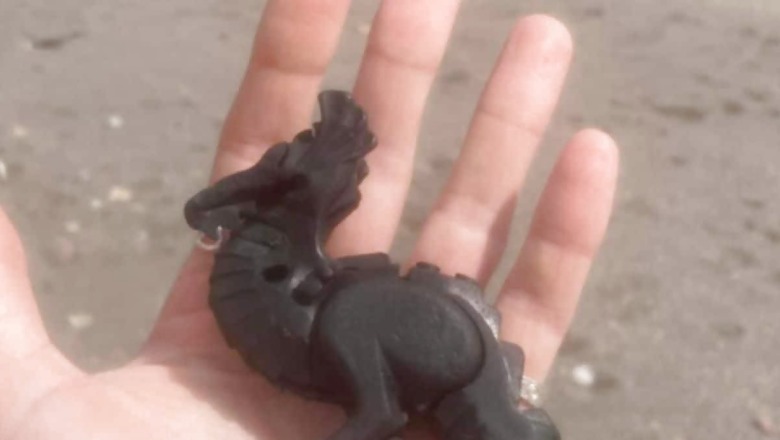
views
A rogue wave severely wrecked a cargo ship named the Tokio Express in 1997 when it was transporting five million Lego pieces in a shipping container. The ship was sailing from Rotterdam, Netherlands, to New York when it nearly flipped and lost all 62 of its shipping containers, an accident famously referred to as the Great Lego Spill and one of the biggest toy-related environmental mishaps. Interestingly, people continue to discover these Lego pieces even 27 years later.
Soon after the accident, beachcombers in the southwest of England found on their shore a plastic octopus, spear guns, scuba tanks, cutlasses, flippers, and even dragons. Among them, Cornwall-born Tracey Williams, who is a beachcomber and environmental activist, has been documenting the Lego spill on social media pages Facebook, Instagram and X under the account name Lego Lost at Sea.
In one post, Tracey shared an image of a black Lego dragon piece. In the caption, she pointed out that there were 33,941 Lego dragons in the container—33,427 of these were black and 514 were green.
Tracey also reported that this Lego was discovered near shells by a concrete slipway at the Place called Portwrinkle Beach in the western part of Whitsand Bay in Cornwall.
Speaking with the New York Times, she mentioned, “The very first time I went to the beach, I found a bit of Lego from the spill, and I thought that was quite astonishing.”
Her discovery gave rise to the concept of establishing a community to track down other Lego finders, the parts they had located and their locations. Following the BBC’s coverage of her Facebook page, she received a deluge of submissions.
People joyfully posted their findings to the page after discovering small, colourful octopuses, life rafts, dragons, diving flippers, scuba tanks, seagrass, and more.
The effort gained a lot of traction and produced the book Adrift: The Curious Tale of the Lego Lost at Sea.
The 1997 castaway Legos would take almost 1,300 years to completely degrade, according to a study that was published in Environmental Pollution in 2020. This analysis was done using X-ray fluorescence to analyse the Lego structure.













Comments
0 comment